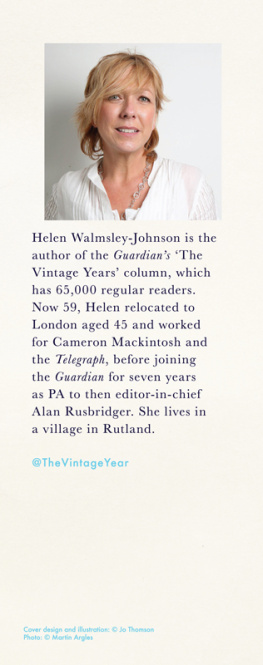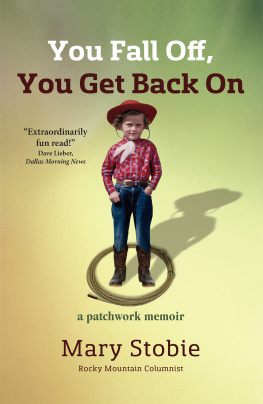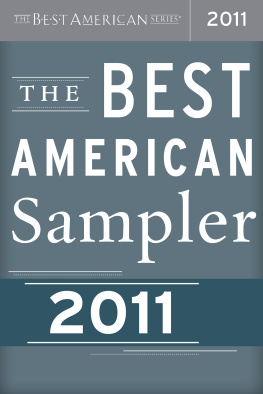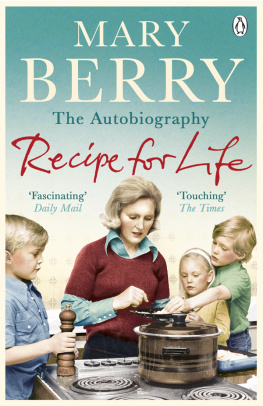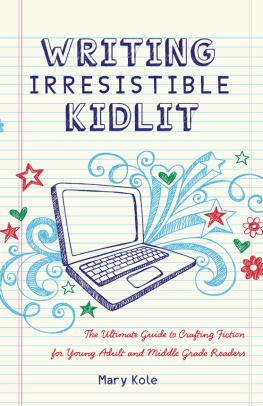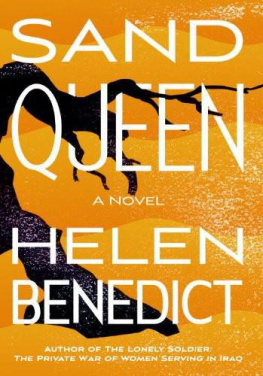THE SIX-MINUTE MEMOIR
A BUR OAK BOOK
Holly Carver, series editor
THE SIX-MINUTE MEMOIR
FIFTY-FIVE SHORT ESSAYS ON LIFE
MARY HELEN STEFANIAK
UNIVERSITY OF IOWA PRESS
IOWA CITY
University of Iowa Press, Iowa City 52242
Copyright 2022 by Mary Helen Stefaniak
uipress.uiowa.edu
ISBN 978-1-60938-851-5 (pbk)
ISBN 978-1-60938-852-2 (ebk)
Printed in the United States of America
Cover design by Kimberly Glyder
Text design and typesetting by April Leidig
No part of this book may be reproduced or used in any form or by any means without permission in writing from the publisher. All reasonable steps have been taken to contact copyright holders of material used in this book. The publisher would be pleased to make suitable arrangements with any whom it has not been possible to reach.
Printed on acid-free paper
Cataloging-in-Publication data is on file with the Library of Congress.
Madeline DeFrees, excerpts from In the locker room and In the middle of Priest Lake. From Blue Dusk: New and Selected Poems, 19512001 by Madeline DeFrees. Copyright 1991 by Madeline DeFrees. Reprinted with the permission of The Permissions Company, LLC, on behalf of Copper Canyon Press, coppercanyonpress.org.
Czeslaw Milosz, Six Lectures in Verse: Lecture IV. From New and Collected Poems: 19312001 by Czeslaw Milosz. Copyright 1988, 1991, 1995, 2001 by Czeslaw Milosz Royalties, Inc. Used by permission of HarperCollins Publishers.
For everyone who appears in these pages,
whether by name, anonymously, or in disguise
CONTENTS
.
A NOTE TO READERS ABOUT
WHAT YOULL FIND IN THIS BOOK
In 1998, while I was working hard every day on what I hoped would become my first novel, the editor of the Iowa Source invited me to write a monthly column for her magazine, which is distributed free in Iowa and to subscribers in other parts of the world. Claudia had previously published an essay I wrote about serving as a chaperone for my daughters high school show choir on a road trip to New Orleans, which included an eighteen-hour bus ride each way and three days (or was it three weeks?) at a hotel in the French Quarter.
Writing regularly for Iowas Enlightening Magazine would give me a substantial local audiencemore than twenty thousand readersincluding the kind of readers who recognize the name on your credit card or (in the old days) on your check at the grocery store and say things like, Arent you the writer? and I loved the one about scuba diving! The Iowa Source has been published without a break since it was founded in 1984 in Fairfield, Iowa, a unique community of about ten thousand in the southeastern corner of the state. When I asked editor and publisher Claudia Mueller how she has managed to keep the magazine alive and well for more than thirty-seven years now, she said, Weve had to constantly adapt to changes, rethinking and refining our content when necessary. The monthly format is perfect for that, and its been fun to reinvent the Source over the years.
Despite the potential readership, not to mention monthly opportunities for reinvention, my first thought about writing a column was Are you kidding? Im trying to write a novel here. I already had a full-time teaching job getting in the way. Trying to save a few hours each day to inch the novel forward seemed impossible enough without taking a break every month to write something else.
Something short.
Something with an end in sight.
By the time my novel came out in 2004, it was obvious to me that my ability to finish the darn thing depended in large partthank you, Claudia!on those monthly breaks to write something short, something with an end in sight. Claudia said I could write about anything I wanted. Like a lot of peopleHenry James and Anas Nin, to name just twoI had notebooks full of observations and descriptions and overheard conversations and deep thoughts and surprising things my children and (eventually, though not yet in 1998 or even 2004) my grandchildren had said. I thought of these notebooks as inventory for my fiction, and I have, in fact, used much of the material that way. The notebooks were also a place to record and save experiences that I didnt have a use for but didnt want to lose, experiences that seemed significant enough to write down. As a monthly columnist, I had a place (and a deadline) to put them down on the page in a thousand words or so, which happens to be about the number of words you can read aloud at a conversational pace in six minutes.
I dont remember how Dennis Reese at Iowa Public Radio discovered my column. He might have picked up a copy of the Iowa Source with his coffee one morning, and after reading one of my piecesmaybe Airborne in the Dairy Section or Ducklings on Dodge or The Right Clotheshe might have thought, Hey! This would make a great radio commentary. Or I might have sent him a couple of samples and a pleading query letter. One way or the other, I ended up reading many of these pieces as six-minute spots on Iowa Public Radio.
In I Could Tell You Stories, Patricia Hampl wrote, Stalking the relationship, seeking the congruence between stored image and hidden emotionthats the real job of memoir. I dont know how much stalking I have done here. Almost every stored image I came up with as I wrote these pages seemed to explainto me, if to no one elsethe extent to which I was and continue to be Alive and Well (In the Middle of the Middle West), which is what we called the column. The hidden emotion to be found in most of these pages was best described by a regular reader of my columna retired professor of law, no lesswho remarked, How much fun she has in her life! Then she writes it all down, and I get to enjoy it, too. (See Who Cares, Anyway? Diary of a School Age Romantic.)
I dont know if fun counts as a hidden emotion, the kind you might stalk in memoir, but I do know how surprisedand pleasedI was by that readers comment. Bad and sad things happened to me, and to others I care about, during the years when I wrote my column, but the things that came to mind whenever I started assembling one of these little essays were the kinds of things we find ourselves wanting to share with someone else because we find them interesting, or even remarkable, worth remembering, and, more often than not, funny.
I like to think that Im following in the footsteps of a writer I first encountered a few years ago while teaching World Lit I: Gilgamesh to Shakespeare. Sei Shnagon, author of The Pillow Book, filled her pages with six-and five-and three-and two-and even one-minute memoirs: scenes and images, anecdotes, descriptions, lists, flashes of poetry, and her thoughts about what it was like to be a lady at court in tenth-century Japan. My six-minute memoirs offer glimpses of what it was like to be a woman with a family and friends and a job (more than one job, actually) and a series of cats and a history, living in one old house after another at the turn of the twenty-first century in the middle of the Middle West.
Some years ago, I taught a class for the Senior Center in Iowa City. It was a writing class. The idea was to capture a place, a person, a moment, or even an object, a practice, a process plucked from your personal past and save it from oblivion by putting it vividly on the page. If you were going to write about baking biscuits with your grandmother (and I remember that a woman in the class did just that), then you wanted to make your readers smell and maybe taste those biscuits, you wanted to show your grandmothers hand pressing the rim of a glass into the flattened and floury dough. Maybe you could even capture her voice. As she handed you the glass to cut the next biscuit, did she say, Careful, careful now! or Cut closer to the other circlesdont waste so much, or You try it nowits easy!? Or did she tell you other things, what life was like when she was a girl and later a mother, things she hoped for, things she loved (or hated) to do, things that made her happy, things that broke her heart?


